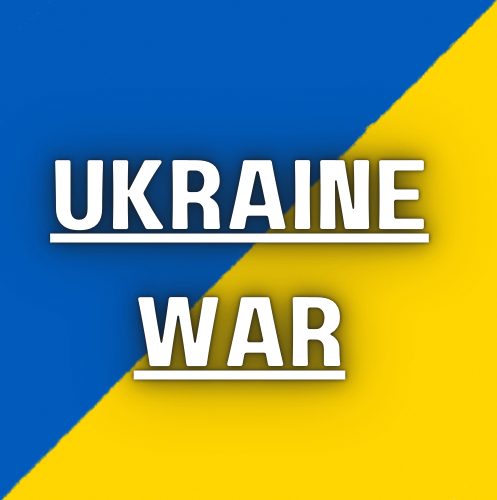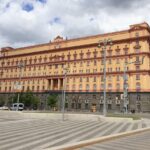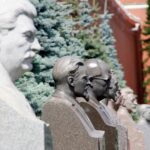The history of Russia from the Russian Revolution in 1917 to the present day has been a story of dramatic political, economic, and social changes. Below is an outline of key events during this period:
1. Russian Revolution (1917):
• February Revolution (March 1917): The Russian Empire, led by Tsar Nicholas II, was facing immense challenges including military failures in World War I, economic hardship, and widespread dissatisfaction among the people. The February Revolution resulted in the abdication of Tsar Nicholas II and the establishment of a Provisional Government.
• October Revolution (November 1917): Led by Vladimir Lenin and the Bolshevik Party, the October Revolution overthrew the Provisional Government and established a communist state. The Bolsheviks soon formed the Russian Soviet Federative Socialist Republic (RSFSR), the precursor to the Soviet Union.
2. Civil War and Formation of the USSR (1917–1922):
• Russian Civil War (1917–1922): After the October Revolution, a brutal civil war broke out between the “Reds” (Bolsheviks) and the “Whites” (anti-Bolshevik forces). The Bolsheviks emerged victorious and consolidated their power.
• Formation of the Soviet Union (1922): The RSFSR, along with other socialist republics, formed the Union of Soviet Socialist Republics (USSR) in 1922. Lenin played a key role in this process, though he passed away in 1924.
3. Stalin’s Rule (1924–1953):
• Joseph Stalin emerged as Lenin’s successor and gradually consolidated absolute power. He implemented policies of rapid industrialization and collectivization of agriculture, aiming to transform the Soviet Union into a global power. However, this came at a massive human cost, with famines (most notably the Holodomor in Ukraine) and purges that resulted in millions of deaths.
• Great Purge (1936–1938): Stalin carried out widespread purges of political rivals, military leaders, and ordinary citizens, consolidating his authoritarian control.
• World War II (1939–1945): The USSR played a pivotal role in the defeat of Nazi Germany after initially signing a non-aggression pact with Hitler in 1939. Following the German invasion in 1941 (Operation Barbarossa), the USSR joined the Allies and bore the brunt of the Eastern Front, losing approximately 27 million people in the war. The war ended with Soviet forces capturing Berlin in 1945.
4. Cold War (1945–1991):
• Post-War Expansion and Cold War Rivalry: After WWII, the USSR emerged as a superpower, expanding its influence in Eastern Europe and leading to a rivalry with the United States. This era, known as the Cold War, saw a global struggle between the capitalist West (led by the US) and the communist East (led by the USSR).
• Khrushchev’s Thaw (1953–1964): After Stalin’s death in 1953, Nikita Khrushchev took power and denounced Stalin’s excesses. He implemented a policy of “de-Stalinization,” attempting to ease repression and promote more consumer goods production. His leadership saw major international events like the Cuban Missile Crisis (1962), which brought the world to the brink of nuclear war.
• Brezhnev Era (1964–1982): After Khrushchev’s ousting in 1964, Leonid Brezhnev led the USSR through a period of political stability but economic stagnation. The Brezhnev years were marked by a continuation of Cold War tensions, but also by a decline in the Soviet economy due to inefficiencies and a lack of innovation.
5. Gorbachev and the Collapse of the Soviet Union (1985–1991):
• Mikhail Gorbachev came to power in 1985 and initiated reforms known as glasnost (openness) and perestroika (restructuring). Glasnost allowed more political freedoms and freedom of speech, while perestroika aimed to reform the stagnant Soviet economy. However, these reforms unintentionally weakened the Soviet state.
• End of the Cold War (1989–1991): Gorbachev’s policies and the weakening of Soviet control over Eastern Europe led to the fall of communist regimes across the Eastern Bloc in 1989. By 1991, the Soviet Union itself was on the verge of collapse.
• Dissolution of the USSR (1991): In December 1991, the Soviet Union officially dissolved, and 15 independent republics, including Russia, emerged from its former territories. Boris Yeltsin became the first President of the Russian Federation.
6. Post-Soviet Russia under Yeltsin (1991–1999):
• Economic Turmoil: Russia transitioned to a market economy, but this shift was poorly managed, leading to a severe economic crisis. Hyperinflation, unemployment, and widespread poverty characterized much of the 1990s.
• Political Instability: Yeltsin’s government faced multiple crises, including a coup attempt in 1993 and a brutal war in Chechnya. Corruption and oligarchs wielded immense power.
• 1998 Financial Crisis: Russia defaulted on its debt, causing further economic hardships. Yeltsin’s popularity plummeted, and he resigned in 1999, naming Vladimir Putin as his successor.
7. Putin’s Russia (1999–Present):
• Consolidation of Power: Vladimir Putin, who became president in 2000, initially stabilized the Russian economy, largely thanks to rising oil prices. He gradually consolidated political power, curbing the influence of oligarchs and centralizing control over media and regional governments.
• Economic Growth and Modernization: The early years of Putin’s presidency saw economic growth and improvements in living standards. However, his government was criticized for authoritarian tendencies, human rights violations, and the suppression of political dissent.
• Geopolitical Tensions: Russia reasserted itself on the global stage under Putin. Key events include the 2008 war with Georgia and the annexation of Crimea (2014), which led to international condemnation and sanctions. Russia has been increasingly assertive in international conflicts, such as its involvement in the Syrian Civil War and in the cyber domain.
• 2020 Constitutional Amendments: In 2020, Putin pushed through constitutional changes that allowed him to remain in power potentially until 2036.
• 2022 Invasion of Ukraine: In February 2022, Russia launched a full-scale invasion of Ukraine, leading to one of the largest military conflicts in Europe since World War II. This conflict has led to severe global condemnation, further sanctions, and a realignment of geopolitical alliances.
• Economic and Political Challenges (2022-Present): Russia faces growing internal challenges, including economic isolation due to Western sanctions, military setbacks in Ukraine, and discontent over the government’s policies. Yet, Putin remains in power, navigating a volatile political landscape.
Conclusion:
From the collapse of the Tsarist autocracy to the rise and fall of the Soviet Union, and the complex, often authoritarian state under Vladimir Putin, Russia’s modern history has been shaped by dramatic shifts in governance, ideology, and its role on the world stage. The nation remains at the center of global geopolitics, even as it grapples with internal and external challenges.
Ukraine war understanding © 2024 by Naccache Louann is licensed under Creative Commons Attribution-NonCommercial-NoDerivatives 4.0 International



